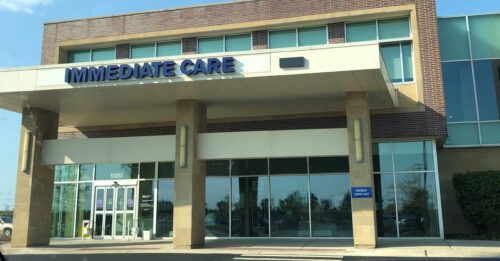Blocking Interference
Have you ever lived in one of those homes where it is difficult to get a nice, hot shower? Where, if someone repeatedly turns on the tap at a sink at the same time, your shower goes from hot to cold and back again? In a sense, that's similar to what happens to a building's power supply when affected by harmonic interference.
Have you ever lived in one of those homes where it is difficult to get a nice, hot shower? Where, if someone repeatedly turns on the tap at a sink at the same time, your shower goes from hot to cold and back again?
In a sense, that’s similar to what happens to a building’s power supply when affected by harmonic interference. Power wanes or surges, and instead of just an uncomfortable temperature, as in the shower, electrical equipment can actually heat up to the point of failure.
Harmonic interference wasn’t a concern until the 1980s, when harmonic-generating equipment such as personal computers, fax machines, laser printers and variable frequency drives invaded commercial buildings.
But now, we have to deal with all of these power quality issue.
The ’80s brought the switched-mode power supply into almost every kind of electronic equipment. Also, variable-frequency drives controlling pump or air-handling unit motors became the norm, because varying or lowering the speed of these motors is more energy-efficient. And, we started using electronic ballasts in building lighting systems, because they were more energy-efficient than magnetic ballasts. These changes introduced higher efficiencies, but they increased the problems of harmonic interference.
It’s a classic case of the unintended consequence, yet one that electrical engineers have learned to overcome. The first step, of course, is an understanding of the phenomena that interfere with power quality.
Disharmony of Harmonics
Harmonics are generated in currents and voltages with frequencies that are multiples of the fundamental frequency. In the United States, the fundamental—or first order—frequency is 60 hertz (Hz). The 2ndharmonic is 120 Hz; the 3rdis 180 Hz and so on. The sine waves of these harmonic frequencies add together with the fundamental frequency sine wave to form a distorted sinusoidal wave. The amount of deformation created in the resultant sine wave is measured as total harmonic distortion (THD).
Imagine it this way. A pure, 60-Hz wave would have smooth and flowing peaks and valleys, as in the top figure (p. 12), which has an undistorted sine waveform. When harmonics enter the picture, it looks more like a chart of the rise and fall of the stock market fluctuating over time, with jagged outcrops on top of peak periods and random sinkholes in the valleys, as shown in the bottom figure.
Blame harmonics for the exaggerated peaks, sinkholes and other wave distortions. Harmonics occur when non-linear loads draw electrical current in pulses, not a smooth, consistent flow of electrical current proportional to the applied voltage. Computers fit that bill, with their switched-mode power supplies that draw current in high amplitudes and short pulses. The flow of the electrical current is not continuous; it switches on or off as a way of controlling the output voltage. These pulses create a distortion in the input electrical current and voltage wave shape.
“One source of distortion by itself may not be a problem, but connected with other equipment producing their own distortions, the resulting total harmonic distortion can make other equipment operate incorrectly, lose data or actually fail,” explains Ray Lewis, P.E., senior electrical engineer in the Fort Worth Facilities Unit of Carter & Burgess.
Conversely, motors traditionally were predictable loads, steadily drawing current to make the motor turn. But increasingly, engineers are specifying variable-speed drives, which control motors for pumps and air-handling units and allow a motor to operate over a range of speeds to adjust to a particular situation. This range can increase efficiency by using less power when it is not needed. However, the variable-speed drives produce harmonics in the power conversion process.
Ideally, the current traveling on a three-phase power system’s neutral conductor is just that—neutral. In a balanced three-phase system supplying linear loads, the currents in the neutral conductor cancel each other, resulting in a current that is near or equal to zero. Harmonic currents can add together on the neutral conductor to levels that exceed the phase currents.
That overloads the wire, which has insulation with temperature limitations. Too much current leads to overheating of both conductors and transformer supplying conductors. Overheating for extended periods of time can damage conductors and transformers.
Sometimes, as in a three-phase system, harmonics with high negative components can create a negative voltage. The result is a “torque fight,” where the motor doesn’t have enough power to do what it’s supposed to do, so it pulls increased power from the power source. But in doing that, it increases the current, which can eventually burn up the motor.
“Capacitor banks are commonly used to correct low power factor. Harmonics in the system can set up a resonant frequency with the capacitors causing a sharp increase in current, thereby blowing the fuses protecting the capacitors or even causing the capacitors to fail,” says Lewis.
Can It Be Fixed?
This may sound dire, but catastrophic failure is not inevitable. Electrical engineers address harmonic interference in one of two ways: either design a system to handle harmonic distortion, or at least, design a system to mitigate it.
“Getting harmonics under control can save dollars and energy, as well as equipment and data. In real life, this is evident particularly in data centers full of computers. The computers must be kept cool. If harmonics are causing equipment to heat up, air conditioning systems are using more energy to cool down the room,” Lewis states.
Uncontrolled harmonics can also disrupt business by causing noise or static in telephone systems. In this case, harmonic distortion is caused by the common practice of running telecommunications cable adjacent to power conduits. If there is more than 5% distortion on the cable, phone systems can experience noise. When available, engineers can specify electrical equipment rated for less than 5% THD.
Providing a sufficiently sized path for harmonic currents to flow is another option. Engineers can specify transformer neutrals at 200% of the phase current rating, as well as separate neutral conductors for each individual circuit.
This anticipates the added current and provides a path for it to flow with appropriate insulation ratings for the total or individual loads. However, one consideration in specifying a 200% neutral is that conductors have to be de-rated for multiple current-carrying conductors in a single conduit. With purely linear loads, the neutral current is so minimal that the neutral conductor is not considered a current-carrying conductor. If a 200% neutral is specified, it is assumed that the neutral must be regarded as current-carrying and should be included for the purpose of de-rating. The current-carrying capability of each conductor is reduced by approximately 20%.
Another tactic is to put sensitive electronic and computer loads on separate circuits or even separate panels from other equipment. This concentrates the problem of switched-mode power supplies, so the harmonics they create can be anticipated and dealt with as supplied from a known source.
Special transformers can reduce or tolerate harmonics and their effects as well. Harmonic-canceling transformers— known as phase-shifting transformers —reduce distortion by shifting multiple harmonic frequencies to cancel each other. K-rated transformers are manufactured with heavier windings and higher-rated neutral terminals in anticipation of the harmonic loads. Transformers such as these are designed at the factory to handle specific currents and, therefore, handle higher temperatures that result from harmonics.
Engineers must anticipate harmonic distortion and design a path for currents to flow. That’s what Carter & Burgess did recently in designing a new data center for an oil company. K-rated transformers supply the computer loads in the data center, including the servers and the distribution equipment in that room.
Harmonic-canceling filters are another solution. In building an SBC Internet data center, we specified filters on the variable frequency drives. The uninterruptible power supplies for the data center had filters as well. Any UPS will produce some harmonic distortion from the input rectifier stage, but maybe not to the degree that the UPS itself shows any effect. Still, UPS-caused harmonic distortion adds to distortion in the rest of the system and components that can lead to a failure somewhere along the way. Without a filter, a UPS may produce harmonic distortion of as much a 10% percent, but with a filter, the distortion can be brought down to 3%.
The variable-frequency drives (VFD) that power more efficient pumps or air conditioners can be de-rated, or the designing engineer can specify filters—or both. That’s a solution to overheating. Another solution is to specify a 12 or 18 pulse VFDs, which incorporate phase shifting transformers to reflect a less-distorted sine wave back into the electrical distribution system.
Can You Solve It?
In a building project, engineers anticipate harmonic distortion and analyze equipment and electrical design options to come up with the best configuration and ideal power equipment. An engineer’s first choice is to mitigate harmonic distortion at the source—control it or eliminate it. The next option is to design a system around the distortion.
Clearly, the idea is to stop the problems before they start. These kinds of mitigation efforts work well for new construction, but with existing buildings, the problem of correction is more difficult. However, corrections can be accomplished with measures like replacing standard transformers with K-rated transformers or specifying all replacement ballasts with less than 10% THD.
Electrical engineering standards established by the IEEE set acceptable levels of harmonic distortion, because interference is a part of virtually every power distribution system these days. But having standards doesn’t automatically assure smart electrical engineering for your particular situation. An engineer and his or her client need to talk about how any system is to be used so harmonic interference can be addressed—or designed around. If the building and the power generation are already in place, an engineer can analyze and measure harmonic distortion, and then address this invisible problem.
Investigating the Invisible
Recently, Carter & Burgess encountered a harmonic interference issue in a new data center. Here’s how the team worked through the possible causes and identified a solution.
The data center was set up with uninterruptible power supply (UPS) systems in the main electrical room that served a switchgear, which in turn served power distribution units (PDU) on the data floor. There were also several large, secondary-cooling pumps. Each of these pumps was controlled by a variable frequency drive (VFD) served from each main switchgear.
During the commissioning testing, the UPS was connected and functioning with the main switchgear. That helped filter out any harmonics generated by the secondary cooling pump with the VFD running.
However, something suspicious occurred in tests with the PDUs powered from the utility and generator backup without the UPS connected to the same equipment. These tests were successful except when the secondary pump equipped with a VFD happened to be running at the same time.
If the secondary pump was running, the harmonics generated by its VFD were seen by the PDUs on the data floor. That caused the PDUs to sound an alarm.
In analyzing the situation, it was found that harmonics were being reflected back from the VFDs onto the electrical distribution system. To remedy this situation, engineers installed harmonic limiting filters adjacent to each of the VFDs that served each secondary pump. The filters solved the problem.
Do you have experience and expertise with the topics mentioned in this content? You should consider contributing to our CFE Media editorial team and getting the recognition you and your company deserve. Click here to start this process.



